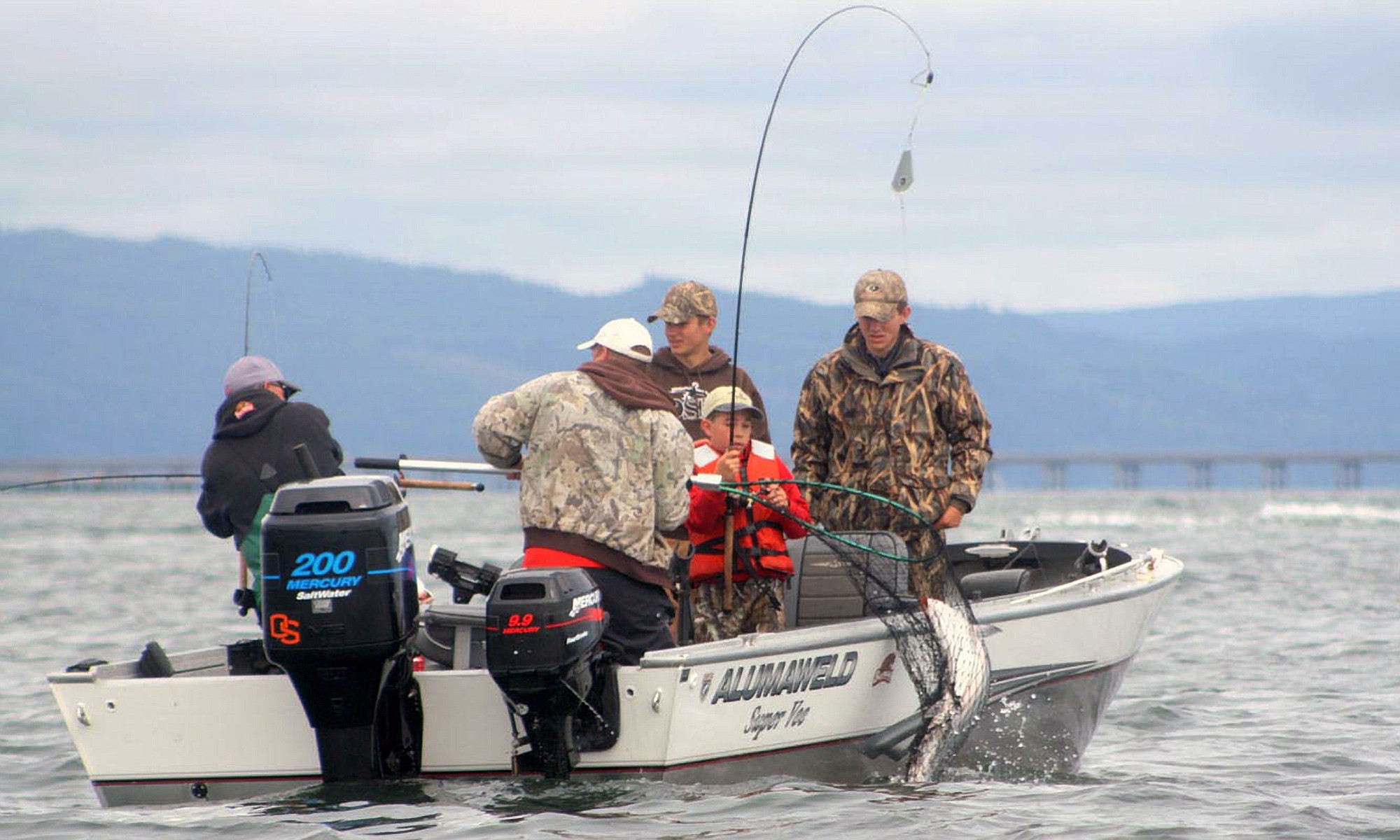State and federal biologists are forecasting a whopping run of 900,200 fall chinook salmon — third largest on record — will enter the Columbia River in 2015.
The record-high return was 1.26 million in 2013, with 1.15 million in 2014, the runner-up year.
The fall chinook forecast comes on the heels of a prediction for a strong run of 777,000 coho salmon in the ocean destined for the Columbia River.
“It’s my opinion the Buoy 10 fishery will set records in regards to effort,” said Robert Moxley of Dundee, Ore., a member of the bistate Columbia River Recreational Advisor Group. “That’s all everyone is talking about and it’s not even springer season.”
Buoy 10 is the name given to the August and September fishery in the estuary between Buoy No. 10 where the Columbia meets the ocean and the Tongue Point, 16 miles upstream and slightly east of Astoria, Ore.
Seven stocks combine to make up the fall chinook run in the Columbia River.
Topping the list of good news is that 500,300 “upriver brights” make up more than half of the 900,200 forecast.
Upriver brights are primarily wild salmon originating from Hanford Reach, the free-flowing stretch of the Columbia River in central Washington, along with Priest Rapids Hatchery and two Snake River hatcheries.
Upriver brights are the most prized of the stocks of fall chinook.
The second largest stock, after the upriver brights, is forecast to be the Bonneville pool hatchery stock at 160,500. Those fish come from Spring Creek National Fish Hatchery in eastern Skamania County.
They are a “tule” (dark-skinned) stock, less prized by anglers than the bright stocks, but still a good catch in the ocean and at Buoy 10.
“They are the bread and butter of the ocean fishery,” said Ron Roler, Columbia River policy coordinator for the Washington Department of Fish and Wildlife at a meeting Monday in Olympia.
Returns to hatcheries on lower Columbia tributaries such as the Cowlitz, Kalama and Washougal are forecast at 94,900, which is about average.
Conservation limitations on the harvest of this stock is what most often determines the length of chinook retention at Buoy 10 and in the lower Columbia.
Moxley said the 94,900 number is a disappointment and questioned if it provides enough fish to allow chinook retention to be open through Labor Day at Buoy 10.
Marinas at the mouth of the Columbia River already are selling out moorage slips for August, he said.
“It’s going to be packed this year,” Moxley said. “Most guides I know are already booked.”
There are several concerns surrounding this fall’s fishery, said Steve Watrous of Vancouver. He is Washington sport-fishing representative on the Salmon Advisory Subpanel of the Pacific Fishery Management Council and a member of the bistate Columbia River Recreational Advisory Group.
Labor Day is not until Sept. 7 this year, compared to Sept. 1 in 2014.
Guidelines limiting the catch of wild lower Columbia chinook may be reached prior to such a late Labor Day at Buoy 10, forcing a shift to the unpopular retention of only fin-clipped fish.
Once the regulations at Buoy 10 change to hatchery-chinook-only, much of the sport fleet might move just upstream of Tongue Point, a different management zone.
A big catch in the Tongue Point area potentially could shorten the period when chinook can be retained in the Longview, Kalama, Woodland, Vancouver and Washougal areas of the Columbia, Watrous said.
Warm water in August and September also is another looming problem.
“We all know the biteability decreases when the temperature increases,” he said. “In the past, we’d see all these fish under the boat at the (Astoria) bridge, and you could not get them to bite. Then, they’d be gone upstream the next day.”
Guy Norman, regional director for the Washington Department of Fish and Wildlife, said he is optimistic.
“It looks like another very large return of fall salmon to the Columbia River and should provide for excellent fishing in the ocean and the Columbia River mouth to Tri-Cities,” Norman said. “I’m hopeful the increased runs people have enjoyed in recent years will become more common as the Northwest continues to invest in better conditions for salmon.”
While this fall’s run is down from the past two years, it’s still third largest on record since 1938.
“It’s still a very, very powerful return,” Roler said.




